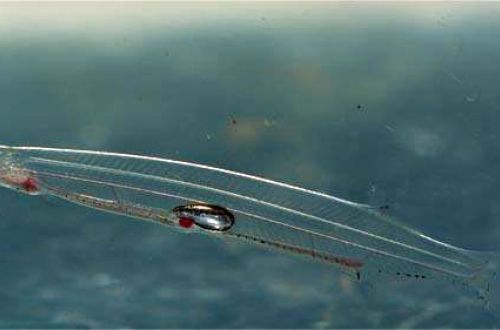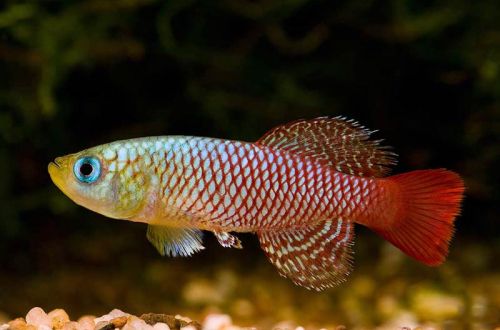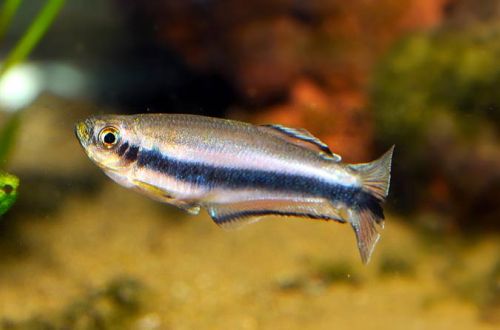
betta pi
Betta Pi, scientific name Betta pi, belongs to the Osphronemidae family. The unusual name is associated with a pattern near the mouth of the fish, similar to the letter π (Pi) of the Greek alphabet. Considered relatively easy to keep and breed, it may be quite within the power of beginner aquarists.

Contents
Habitat
It comes from Southeast Asia from the Malay Peninsula from the territory of southern Thailand and the northeastern regions of Malaysia (the states of Kelantan and Terengganu). Inhabits peat bogs located among tropical rainforests. A typical biotope is a shallow reservoir, the bottom of which is covered with a thick layer of fallen leaves and snags. The water is colored deep brown due to the abundance of tannins released by decaying plant organic matter. During the dry season, the swamps partially dry out and the fish are forced to live in the remaining small isolated puddles in the forest floor.
Brief information:
- The volume of the aquarium – from 80 liters.
- Temperature – 22-28°C
- Value pH — 4.0–6.5
- Water hardness – 1–5 dGH
- Substrate type – any dark
- Lighting – subdued
- Brackish water – no
- Water movement – little or no
- The size of the fish is 8-9 cm.
- Food – preferred food for labyrinth fish
- Temperament – peaceful
- Content alone, in pairs or in a group
Description
Adults reach a length of 8-9 cm. A characteristic feature that gave the name to this species is a black marking on the head near the mouth, reminiscent of the Greek letter π (pi). The rest of the color is light, pale gray with barely noticeable dark horizontal stripes. Males look larger than females, otherwise there are no sexual differences.
Food
Omnivorous species, accepts most popular feeds. You can use specialized products designed for Labyrinth fish. As the manufacturers declare, they include a special diet that takes into account all the needs for certain vitamins and microelements.
Maintenance and care, arrangement of the aquarium
The optimal size of the tank for a pair of fish starts from 80 liters. When keeping Betta Pi, ideally, an environment should be provided that is close to that in which the fish are found in nature. First of all, this refers to the design and composition of water. The main elements of the decor are dark soil, driftwood of variable size, aquatic rooting and floating shade-loving plants. The lighting is subdued. Adding the leaves of some trees will add more naturalness to the design, as well as contribute to giving the water a chemical composition characteristic of natural reservoirs and color it brown.
Maintaining stable water conditions within an acceptable range of temperatures and hydrochemical parameters depends on the regularity of aquarium maintenance procedures, the choice and correct placement of equipment and its smooth operation. The minimum scope of work includes the removal of organic waste (remains of feed, excrement), water treatment and weekly replacement of part of the water with fresh water (15–20% of the volume).
In fairness, it should be noted that over the course of many generations of life in the artificial environment of aquariums, they have adapted to slightly different conditions, therefore, in pet stores, they are often found in almost half-empty tanks, and the composition of the water often deviates from acceptable values so that they can be in one container several different types at once.
Behavior and Compatibility
They are considered quite peaceful and get along well with both relatives and other non-aggressive fish of a comparable size. However, intraspecific relationships are not so harmless. Males tend to exhibit territorial behavior that is exacerbated by lack of space, so in small aquariums it is recommended to keep alone, in a male/female pair or in a harem type.
Breeding / breeding
In favorable cases, spawning is not rare. These fish are caring parents. With the onset of the mating season, the male and female arrange a kind of hugging dance, closely clinging to each other, during which spawning occurs. The male immediately picks up all the fertilized eggs in his mouth, where they will be until the fry appear – from 10 to 28 days. All this time the male does not eat. It happens that young inexperienced males swallowed their offspring or released them ahead of time.
Fish diseases
The cause of most diseases is unsuitable conditions of detention. A stable habitat will be the key to successful keeping. In the event of symptoms of the disease, first of all, the quality of the water should be checked and, if deviations are found, measures should be taken to correct the situation. If symptoms persist or even worsen, medical treatment will be required. Read more about symptoms and treatments in the Aquarium Fish Diseases section.





